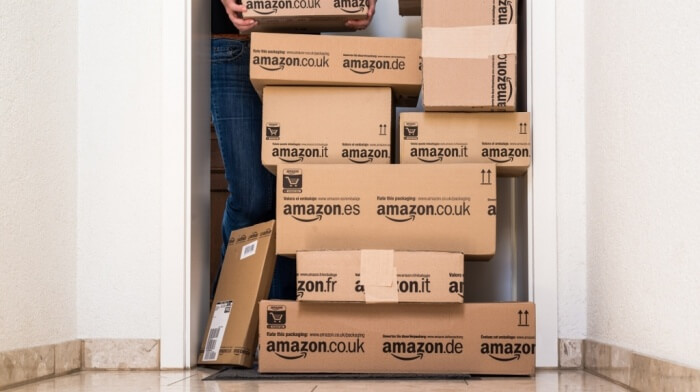Challenger brands used to be defined by their size relative to the dominant market player. But challengers are really those which seek to change the status quo and reverse failures in the market.
2016: The Year Of The Challenger Brand
Challenger brands used to be defined by their size relative to the dominant market player. But challengers are really those which seek to change the status quo and reverse failures in the market.

What does it mean to be a challenger brand today? This is something I’ve been examining this year as I’ve worked with start-ups or observed how brands like Uber or Airbnb seem to exert an influence on brands that extends well beyond the category in which they operate.
Historically the marketing community, influenced predominantly by the great work of Adam Morgan, has defined challenger brands based on their size or relative category position.
The outcome of this, as I’ve seen it, has often been to define a distinct challenger attitude or identity to marketing in the category in which those brands operate: Avis’ ‘We Try Harder’ is the classic manifestation of this approach.
But times have changed – and so have the influence and reach of a new generation of brands. One of the most obvious ways in which marketing or brand-building has changed is the importance of customer experience design – both literally (at a product or service level) and more widely in the practice of marketing and communication.
In this world any brand can ‘challenge’, because they can set the expectations for user experience across every category.
Digital-first brands and start-ups have clearly done this most visibly and dramatically: the ‘Uberfication’ of mobile services, Amazon’s recommendation engine and delivery capabilities, Apple’s ability to simplify the complex or Spotify shaping how we organise and manage media.
But this phenomenon is not just about start-ups, digital powerhouses or ‘unicorns’. ‘Traditional’ brands (if such a thing exists today) also set expectations above and beyond their categories, regardless of size.
Brands like Primark, Aldi and Lidl have re-shaped how shoppers view the relationship between price and quality. Argos is, in my view, a bit of an unsung hero in the way they’ve adapted to define how we expect to be able to shop: to buy seamlessly across any device, to choose exactly how we want to buy in or out of store, and to how technology can be used to facilitate ‘physical’ retail.
In our organisation we run annual survey of how ‘meaningful’ brands are to people. The brands that frequently top this list are not saving the world. They’re shaping expectations of how we interact with brands and the role they play in our lives.
They create services that are very quickly seen to be indispensable (Amazon), they find ways to collapse historical ‘trade-offs’ (Aldi) or simply design their services in ways that fundamentally make things easier for people (Paypal).
Size or category is no longer the most important variable. Behaviour is much more important, and this behaviour can come from lean start-ups or established ‘big’ organisations. What makes them challengers is that they ‘challenge’ how we expect any brand to deliver products or services. They challenge their category and many brands outside of their category.
So if every brand is potentially both challenged and a challenger, what exactly do we focus on ‘challenging’. The answer for me is simple: understanding, setting, exceeding and resetting customer expectations. Modern challenger brands operate with a deep understanding of what customers expect now and may expect next (even if they can’t articulate it themselves).
And although this kind of challenger behaviour is not confined to start-ups, it can be found in concentrated doses amongst start-ups who often define their brand purpose in relation to solving a specific set of customer problems.
I believe they embody modern challenger behaviour in their marketing in 5 key ways:
1. Focus on solving a problem customers may not have realised existed. The skill in spotting and exceeding customer expectations is to see beyond what customers tell you - real world pilots and experiments are much more insightful than focus groups.
2. Have a clarity of purpose and mission that goes beyond making money. Though they aim to make money, they exist to solve a problem or serve a purpose that isn’t nakedly commercial. This gives them a powerful story to tell in marketing that goes beyond trying to create an artificial proposition to sell a product.
3. A relentless focus on user experience. They obsess about how customers experience their brand (not just buy or use it) and are focused on making this process as simple and rewarding as they possibly can. A product or service is not a ‘fixed’ entity – it should exist under scrutiny all the time.
4. They invert traditional media models. They don’t pay to advertise unless they absolutely have to. They will use every ‘weapon’ in their marketing arsenal to encourage either 3rd parties or their customers to sell on their behalf. Only when necessary, to scale up, and with a focus on incremental gains, do they start paying for marketing.
5. They collapse the distinction between brand-response marketing. Many modern marketers are schooled on a tradition that separates ‘brand-building’ from ‘response-generating’ activities. Modern challengers understand that every touchpoint can tell, or add to, a brand story - and make a sale. Storytelling and immediate sales are not mutually exclusive.
In 2016 I’ll be encouraging every brand I work with to embrace these behaviours and to be a challenger brand if they think they aren’t. The alternative is to be challenged: to have the rules of marketing in your category shaped by brands that may not even be in your line of sight.
Thanks for signing up to Minutehack alerts.
Brilliant editorials heading your way soon.
Okay, Thanks!




